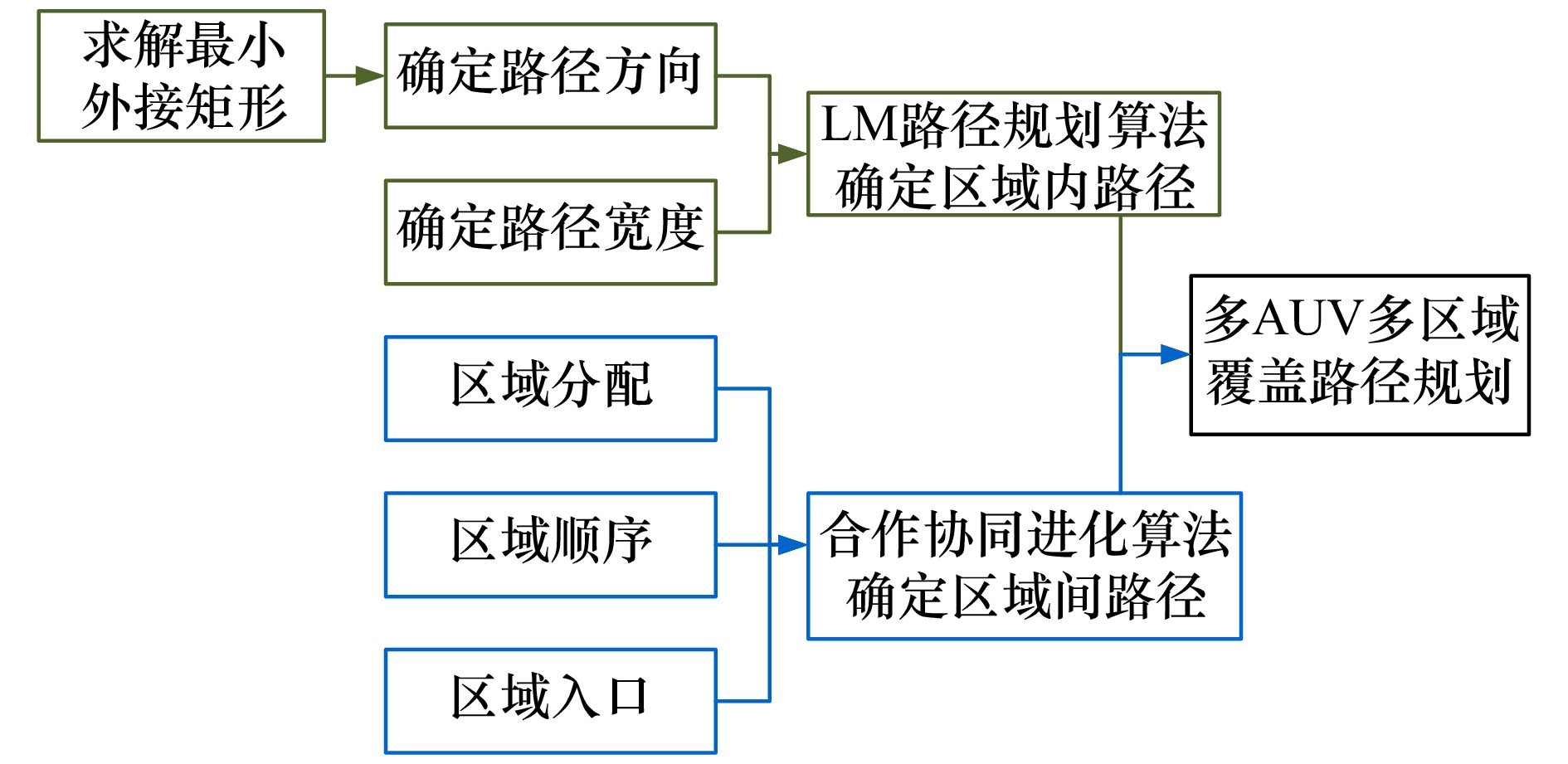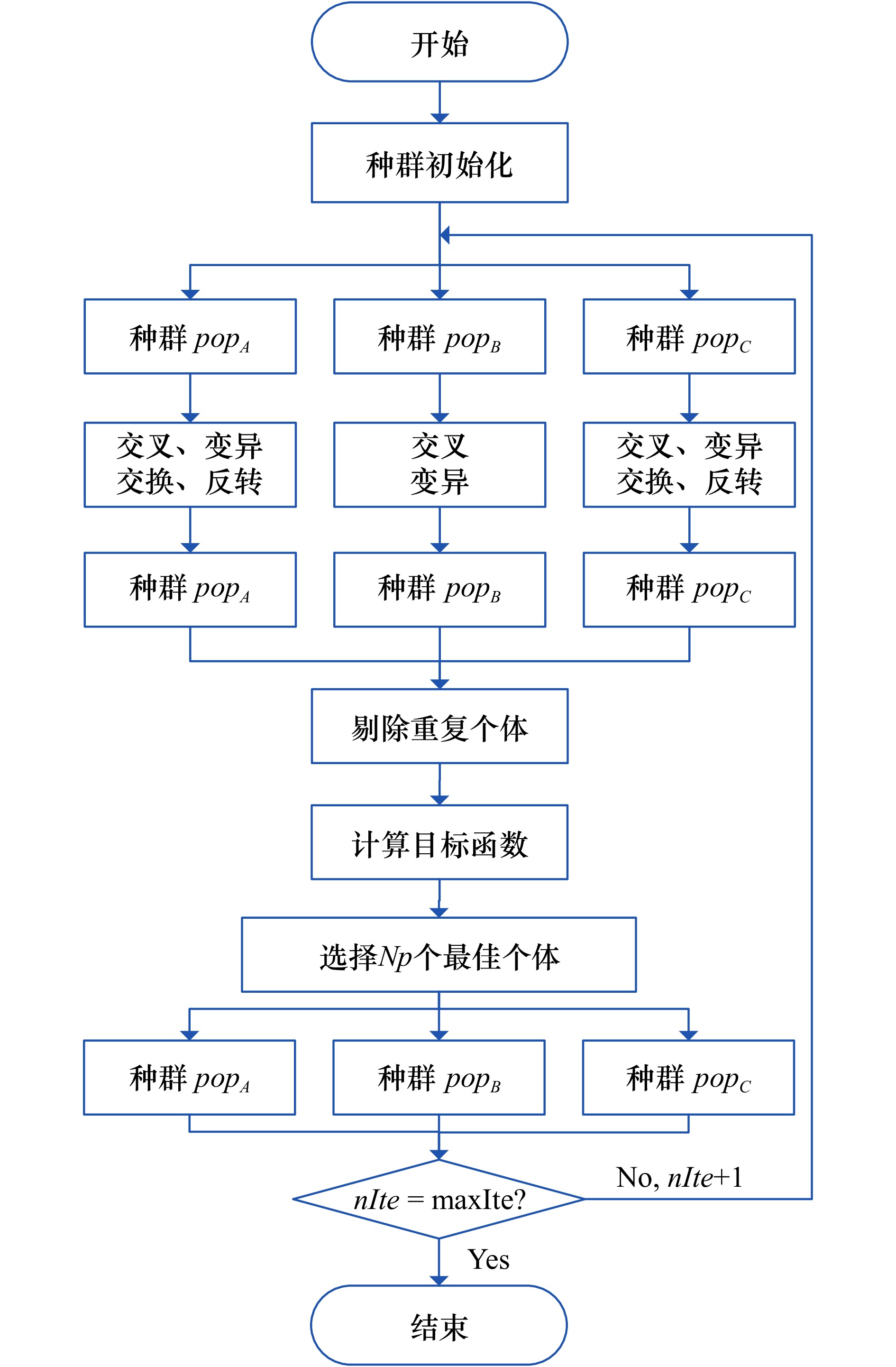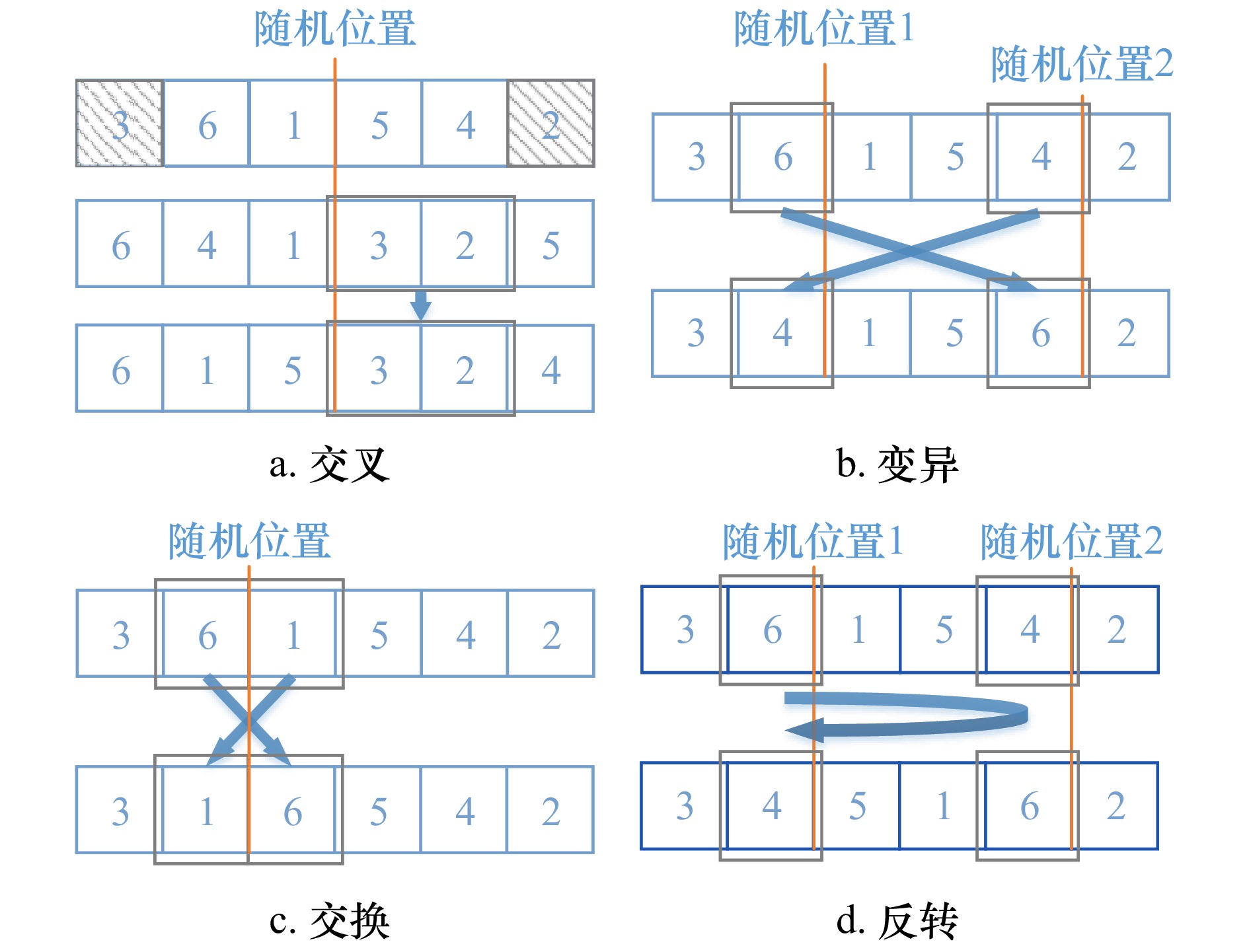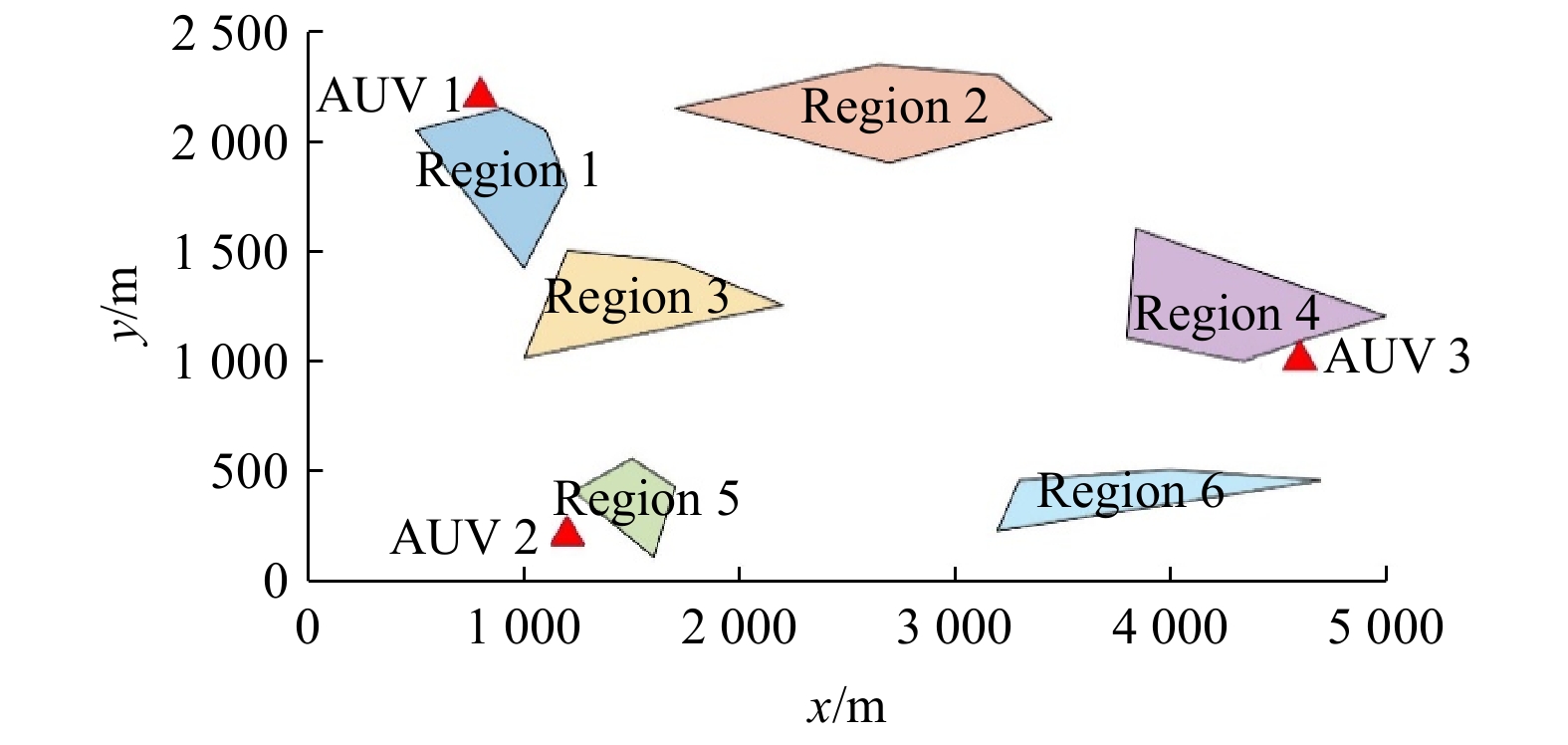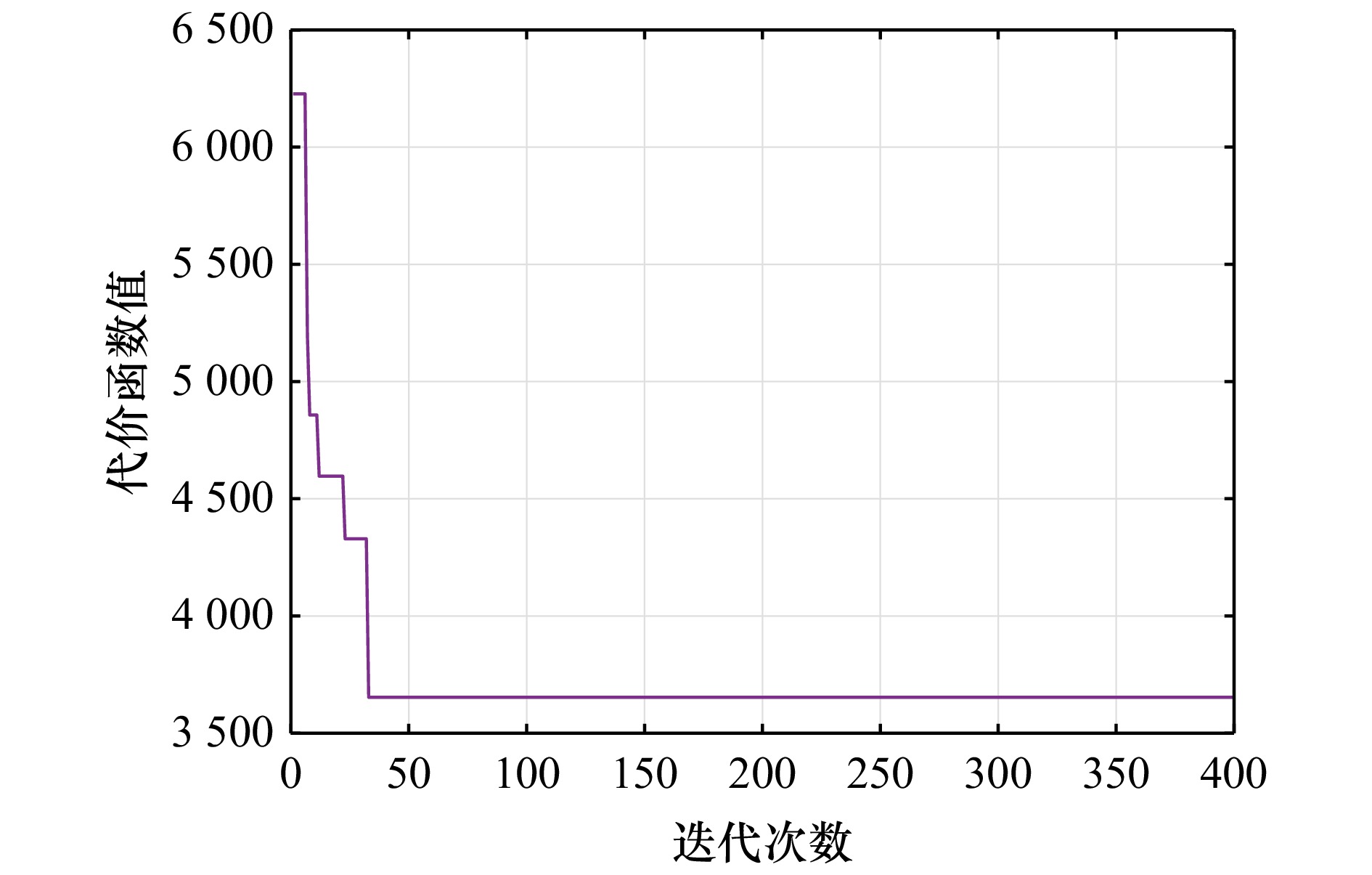Multi-AUV multi-regional coverage path planning based on coevolution
-
摘要: 针对多自主水下航行器(Autonomous Underwater Vehicle, AUV)水下覆盖任务过程中的突发情况,研究了多AUV的覆盖路径重规划问题,提出了一种多机器人−多区域覆盖路径规划(Multi-robot Multi-regional Coverage Path Planning, M2CPP)方法,为可用AUV重新分配未覆盖区域并规划覆盖路径。首先,通过割草机算法确定每个区域中的内部路径和候选入口位置。然后,采用协同进化方法求解最优的区域分配、区域顺序及各区域的最优入口,3个种群协同进化,共同决定所有AUV的完整路径,保证种群多样性,避免陷入局部最优。仿真结果表明,本文方法在根据初始位置和剩余能量为多AUV重规划较短路径的基础上,优化路径结构,保证多AUV工作量均衡,可以较好解决该背景下的路径重规划问题。
-
关键词:
- 多机器人多区域覆盖路径规划 /
- 覆盖路径重规划 /
- 多AUV系统 /
- 协同进化 /
- 任务分配
Abstract: In response to contingencies that arise during the underwater coverage missions of multiple autonomous underwater vehicles (AUVs), this study addresses the problem of coverage path replanning for multiple AUVs. A multi-robot multi-regional coverage path planning (M2CPP) method is proposed to reassign uncovered areas to available AUVs and plan their coverage paths. Initially, the lawnmower algorithm is employed to determine the internal paths and candidate entry points within each region. Subsequently, a coevolutionary approach is utilized to solve for the optimal region allocation, region sequence, and the best entry points for each region. Three populations coevolve collaboratively to determine the complete paths for all AUVs, ensuring population diversity and preventing convergence into local optima. Simulation results demonstrate that the proposed method not only replans shorter paths for multiple AUVs based on their initial positions and remaining energy but also optimizes the path structure to ensure a balanced workload among the AUVs, effectively resolving the replanning issue under such scenarios. -
表 1 参数设置
Tab. 1 Parameter settings
分类 变量 数值 基本
参数区域个数(Nr) 6 AUV个数(Na) 3 AUV剩余能量(E) {0.39, 0.89, 0.65} AUV位置(P) {(800, 2200 ), (1200 200), (4600 1000 )}声呐量程(Ws) 200 合作
协同
进化
方法
参数种群规模(Np) 100 种群个数(NP) 3 最大迭代次数(maxIte) 400 交叉概率(Pc) 0.2 变异概率(Pm) 0.2 表 2 各AUV的路径长度对比
Tab. 2 Comparison of the path length of each AUV
本文方法 GA BiCC AUV $A_1 $ 2248 5540 10180 AUV $A_2 $ 9738 12640 1133 AUV $A_3 $ 5978 9218 5978 总长度 17964 27398 17291 表 3 本文方法得到的各AUV预期工作量、实际工作量和工作量偏差
Tab. 3 The expected workload, actual workload and workload deviation of each AUV obtained by the proposed method
预期工作量 实际工作量 工作量偏差 AUV $A_1 $ 0.202 0.125 0.077 AUV $A_2 $ 0.461 0.542 0.081 AUV $A_3 $ 0.337 0.333 0.004 表 4 平均工作量偏差和平均
$ {H}_{3} $ 对比Tab. 4 Comparison of average workload deviation and average
$ {H}_{3} $ 本文方法 GA BiCC 平均工作量偏差 0.0540 0.0002 0.2637 平均$ {H}_{3} $ 0.1360 0.4553 0.1564 AUV $A_1 $ 0.067 AUV $A_2 $ 0.127 AUV $A_3 $ 0.214 -
[1] 周晶, 司玉林, 林渊, 等. 海底AUV关键技术综述[J]. 海洋学报, 2023, 45(10): 1−12.Zhou Jing, Si Yulin, Lin Yuan, et al. A review of subsea AUV technology[J]. Haiyang Xuebao, 2023, 45(10): 1−12. [2] Cai Chang, Chen Jianfeng, Yan Qingli, et al. A prior information–based coverage path planner for underwater search and rescue using autonomous underwater vehicle (AUV) with side–scan sonar[J]. IET Radar, Sonar & Navigation, 2022, 16(7): 1225-1239. [3] 黄琰, 李岩, 俞建成, 等. AUV智能化现状与发展趋势[J]. 机器人, 2020, 42(2): 215−231.Huang Yan, Li Yan, Yu Jiancheng, et al. State-of-the-art and development trends of AUV intelligence[J]. Robot, 2020, 42(2): 215−231. [4] Matos A, Martins A, Dias A, et al. Multiple robot operations for maritime search and rescue in euRathlon 2015 competition[C]//Proceedings of the OCEANS 2016 - Shanghai. Shanghai: IEEE, 2016. [5] 朱大奇, 胡震. 深海潜水器研究现状与展望[J]. 安徽师范大学学报(自然科学版), 2018, 41(3): 205−216.Zhu Daqi, Hu Zhen. Research status and prospect of deep-sea underwater vehicle[J]. Journal of Anhui Normal University (Natural Science), 2018, 41(3): 205−216. [6] Ai Bo, Jia Maoxin, Xu Hanwen, et al. Coverage path planning for maritime search and rescue using reinforcement learning[J]. Ocean Engineering, 2021, 241: 110098. [7] Song Junnan, Gupta S. CARE: cooperative autonomy for resilience and efficiency of robot teams for complete coverage of unknown environments under robot failures[J]. Autonomous Robots, 2020, 44(3/4): 647−671. [8] Sun Chun, Tang Jingtao, Zhang Xinyu. FT-MSTC*: an efficient fault tolerance algorithm for multi-robot coverage path planning[C]//Proceedings of 2021 IEEE International Conference on Real-time Computing and Robotics. Xining: IEEE, 2021. [9] Yazici A, Kirlik G, Parlaktuna O, et al. A dynamic path planning approach for multirobot sensor-based coverage considering energy constraints[J]. IEEE Transactions on Cybernetics, 2014, 44(3): 305−314. [10] Xie Junfei, Carrillo L R G, Jin Lei. An integrated traveling salesman and coverage path planning problem for unmanned aircraft systems[J]. IEEE Control Systems Letters, 2019, 3(1): 67−72. doi: 10.1109/LCSYS.2018.2851661 [11] Xie Junfei, Chen Jun. Multiregional coverage path planning for multiple energy constrained UAVs[J]. IEEE Transactions on Intelligent Transportation Systems, 2022, 23(10): 17366−17381. doi: 10.1109/TITS.2022.3160402 [12] Kim G. Multi-agent deep reinforcement learning for multi-regional coverage path planning[D/OL]. Ulsan: Ulsan National Institute of Science and Technology, 2021[引用日期].网址. Kim G. Multi-agent deep reinforcement learning for multi-regional coverage path planning[D/OL]. Ulsan: Ulsan National Institute of Science and Technology, 2021[引用日期].网址. [13] Shao Xianxin, Gong Yuejiao, Zhan Zhihui, et al. Bipartite cooperative coevolution for energy-aware coverage path planning of UAVs[J]. IEEE Transactions on Artificial Intelligence, 2022, 3(1): 29−42. doi: 10.1109/TAI.2021.3103143 [14] 金磊磊, 梁红, 杨长生. 基于卷积神经网络的水下目标声呐图像识别方法[J]. 西北工业大学学报, 2021, 39(2): 285−291. doi: 10.1051/jnwpu/20213920285Jin Leilei, Liang Hong, Yang Changsheng. Sonar image recognition of underwater target based on convolutional neural network[J]. Journal of Northwestern Polytechnical University, 2021, 39(2): 285−291. doi: 10.1051/jnwpu/20213920285 [15] Zhou Hexiong, Zeng Zheng, Lian Lian. Adaptive re-planning of AUVs for environmental sampling missions: a fuzzy decision support system based on multi-objective particle swarm optimization[J]. International Journal of Fuzzy Systems, 2018, 20(2): 650−671. doi: 10.1007/s40815-017-0398-7 [16] Viet H H, Dang V H, Choi S, et al. BoB: an online coverage approach for multi-robot systems[J]. Applied Intelligence, 2015, 42(2): 157−173. doi: 10.1007/s10489-014-0571-8 [17] Kapoutsis A C, Chatzichristofis S A, Kosmatopoulos E B. DARP: divide areas algorithm for optimal multi-robot coverage path planning[J]. Journal of Intelligent & Robotic Systems, 2017, 86(3/4): 663−680. [18] Connell D, Manh La H. Extended rapidly exploring random tree–based dynamic path planning and replanning for mobile robots[J]. International Journal of Advanced Robotic Systems, 2018, 15(3): 255903605. [19] 赵荞荞, 张立川, 刘禄, 等. 水下仿生机器人集群节能关键技术综述[J]. 西北工业大学学报, 2022, 40(3): 576−583. doi: 10.3969/j.issn.1000-2758.2022.03.013Zhao Qiaoqiao, Zhang Lichuan, Liu Lu, et al. Review on energy-saving key technologies of underwater bionic robot swarm[J]. Journal of Northwestern Polytechnical University, 2022, 40(3): 576−583. doi: 10.3969/j.issn.1000-2758.2022.03.013 [20] Choset H. Coverage of known spaces: the boustrophedon cellular decomposition[J]. Autonomous Robots, 2000, 9(3): 247−253. doi: 10.1023/A:1008958800904 [21] Galceran E, Carreras M. A survey on coverage path planning for robotics[J]. Robotics and Autonomous Systems, 2013, 61(12): 1258−1276. [22] Kapetanović N, Mišković N, Tahirović A, et al. A side-scan sonar data-driven coverage planning and tracking framework[J]. Annual Reviews in Control, 2018, 46: 268−280. doi: 10.1016/j.arcontrol.2018.10.012 [23] Lakshmi M D, Murugan S S. Keypoint-based mapping analysis on transformed side scan sonar images[J]. Multimedia Tools and Applications, 2020, 79(35/36): 26703−26733. [24] Wu Meng, Zhu Xiaomin, Ma Li, et al. Torch: strategy evolution in swarm robots using heterogeneous–homogeneous coevolution method[J]. Journal of Industrial Information Integration, 2022, 25: 100239. [25] Miguel Antonio L, Coello Coello C A. Coevolutionary multiobjective evolutionary algorithms: survey of the state-of-the-art[J]. IEEE Transactions on Evolutionary Computation, 2018, 22(6): 851−865. doi: 10.1109/TEVC.2017.2767023 [26] Wang Boqun, Zhang Hailong, Nie Jun, et al. Multipopulation genetic algorithm based on GPU for solving TSP problem[J]. Mathematical Problems in Engineering, 2020, 2020: 1398595. -




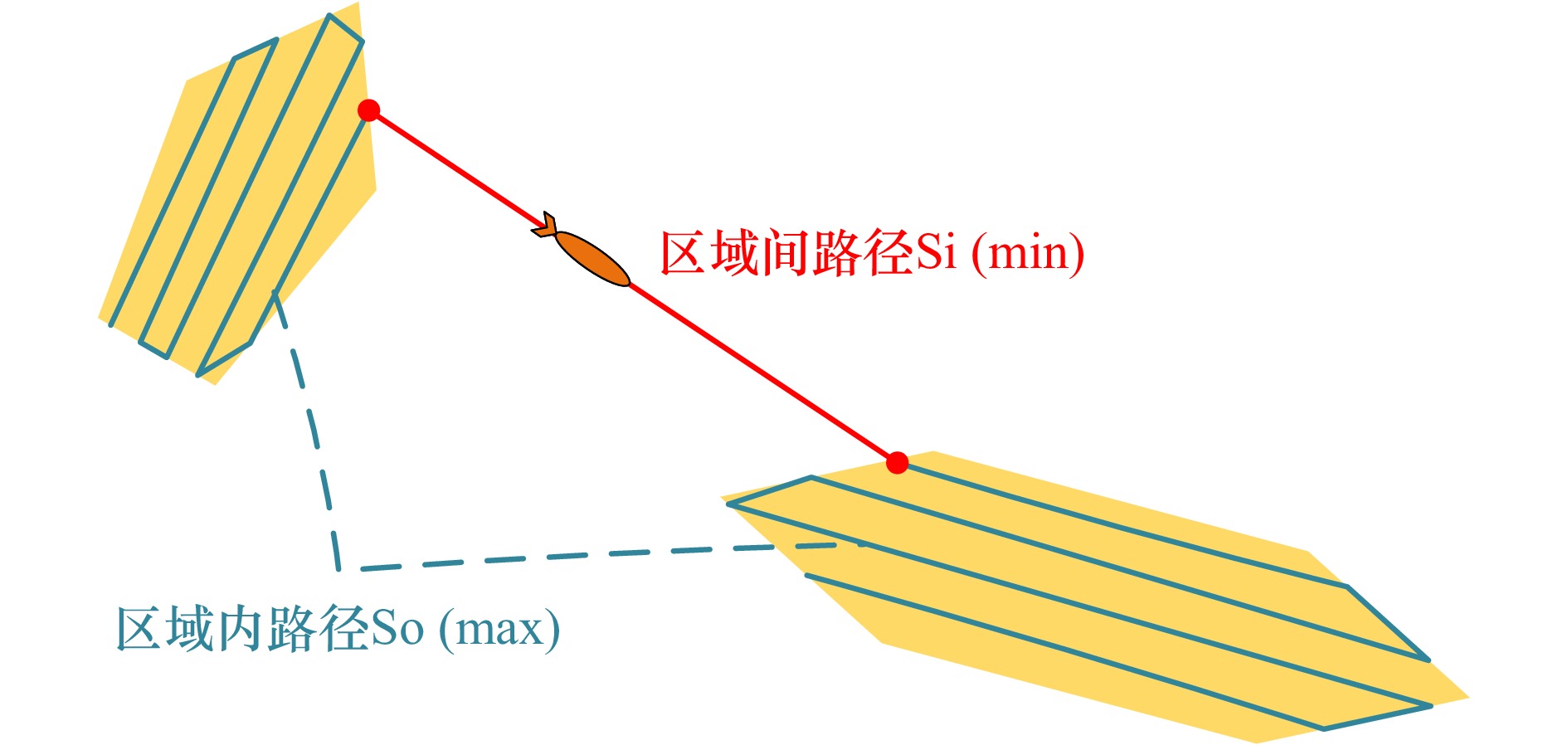
 下载:
下载:
